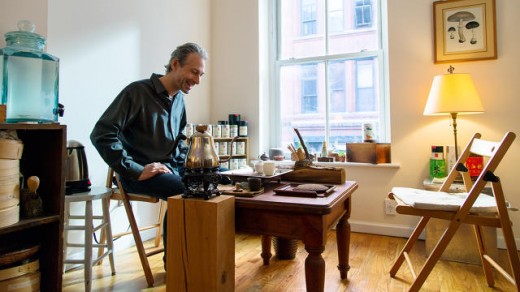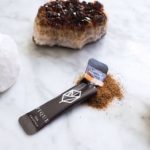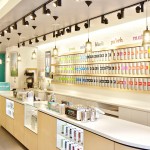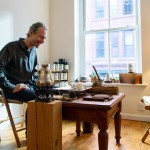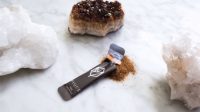Giving Tea The Blue Bottle treatment
the search to make third-wave tea a fact in a tradition obsessive about coffee.
February 5, 2015
At Samovar, a tea bar on Valencia street in San Francisco, white ceramic mugs line white walls, and the seating is one long bench, additionally white. at the back of the counter, sexy males sport bespoke canvas aprons whereas tending to dependent glass contraptions that seem like tall, skinny French presses. hundreds of scones and croissants take a seat beneath glass domes in front of the tablet registers. It has the reverential air of many neighboring third-wave cafes in the Mission: 4 Barrel, Ritual, Sightglass.
individuals continuously come into Samovar in search of a cup of pour over coffee (even though none is on hand—handiest tea). That it can be ceaselessly fallacious for a place that sells a particular grade of coffee is no accident. Jesse Jacobs, who has a tiny tea empire that spans three areas all through San Francisco, calls his six month old Valencia boulevard spot the “Blue Bottle of tea.” “coffee has transform cool,” says Jacobs, at a handy guide a rough clip for any person who works in the tea business. “Tea,” then again, “has an image problem. the general public’s experience of tea is through a tea bag: watery, weak, limp, unimpressive,” he provides, sipping a shiny inexperienced tea in Samovar’s Yerba Buena area.
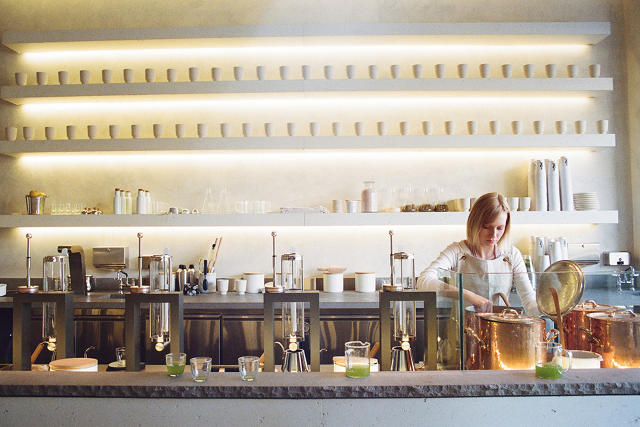
Jacobs, a slim 44-12 months-previous with small, bright eyes and a shiny, hair-free head, has been working to reinforce tea’s reputation in the usa since the dot-com bust, when he opened the first Samovar in the Castro. The restaurants had been conceived as lounges with sit-down tea carrier, the place individuals could “inhabit the present moment, to disconnect in an effort to connect.” That has changed into a a success $25 million trade that draws San Francisco celebs like Kevin Rose, Tim Ferriss, and Mark Zuckerberg. About three years in the past, on the other hand, Jacobs realized that tea nonetheless would not have the identical cachet as coffee; the newest location Samovar, which opened this July, is an attempt to alternate that.
The soar from 1/3-wave espresso to third-wave tea is not a stretch. “there may be an emerging pattern round espresso, round these artisanally pushed experiences,” mentioned Tony Conrad, an investor in Blue Bottle who also has a so much smaller personal funding in Samovar. “are you able to do that same concept for tea? That used to be the thesis of my non-public funding.”
Jacobs is not the one one who thinks the reply is yes. From fancy restaurants to startups to tea-centric cafes, tea obsessives are spreading the gospel of tea up and down the foodie meals chain. That mentioned, this isn’t the primary time that tea lovers have tried to propel tea into the same ballpark as espresso in the united states; the 0.33 wave has had a couple of false begins. Can tea ever encourage as a lot client ardour as espresso?
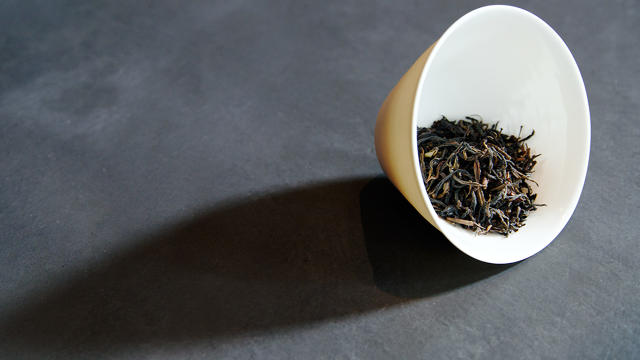
what is third-Wave Tea?
To remember 1/3-wave tea, it’s helpful to remember third wave coffee, which it is advisable signify as an obsession with tiny, granular details. First wave espresso meant Folgers. At a 2nd-wave institution like Starbucks, a shopper may request non-espresso additives like soy milk, two pumps of sugar-free vanilla, and their name spelled accurately. 0.33-wave espresso drinkers are extra all for course of, and the coffee beans themselves: What’s the most effective extraction method? A pour-over? A vacuum pump? What’s the best water temperature? Oh! And for those who are not using a conical Burr grinder, what are you even doing together with your life?
If first-wave tea was Lipton coming to the U.S. on the turn of the twentieth century, and the second wave was once the spread of mall emporiums like Teavana, 0.33-wave tea within the U.S. is, like its espresso predecessor, a return to kind, with an emphasis on purity and accessibility. it’s merely tea, unadulterated and instantly sourced from farmers, frequently from Asia.
“All tea, with the exception of herbals, comes from the same plant,” says Jeffrey Ruiz, the tea curator at Atera, a two-Michelin big name restaurant in ny. he is speaking about camellia sinensis, the traditional shrub that green, black, and white tea are all plucked from. “It’s super vital and every so often i think like a damaged report saying this to the guests.” but, he said, “It used to be information for me, too.”
1/3-wave tea is making an attempt to redefine tea as most effective the stuff that comes from camellia sinensis. “Teavana is like, Let’s put coconut and chocolate in ours,” says Chris Day, the dining room supervisor at Eleven Madison Park, new york’s celebrated three-Michelin famous person temple of nice dining, who began a tea application there in 2011. “Whereas people just like the suppliers we’re working with are like wait a minute, we do not want to taint tea with anything. It’s oolong tea. and notice how nice it’s. That’s kind of the next step.”
His contemporaries agree. Teavana is “no longer Blue Bottle,” stated (Samovar’s) Jacobs. “That’s basically Starbucks, which there’s a space for. 0.33-wave is in regards to the craft and accessibility.”
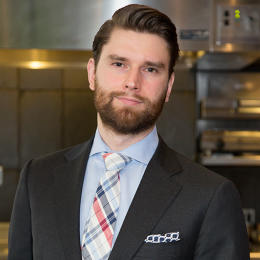
The Tea experience
Atera is hidden behind two unmarked doorways on a quiet Tribeca boulevard, beneath an condominium building with an elevator. within it is comfy, with 12 seats arranged round a square stone countertop. On one of the most partitions is a lush putting backyard, like ivy creeping up an outdated castle tower. Two small whiskey tumblers filled with ice sit on the counter, with what looks like fresh-lower grass clippings sprinkled on the cubes. In over an hour, the ice will soften to make a chilly-brewed gyokoro, a fragrant, refined, and dear variety from Japan that spends a just right portion of its existence growing within the colour.
In a dark tailor-made suit with a lavender spread-collar shirt and a perfectly manicured beard, Ruiz is brewing unfastened-leaf tea in a white porcelain cup with a lid. “this is phoenix oolong,” he mentioned, flipping the lid up to liberate the aroma. It smells earthy, with faint guidelines of charcoal. once the leaves are moist he throws out the first steep, and refills the cup with scorching water for a 2d brew. Ruiz says to let the a gulp coat your tongue. it is scrumptious.
Atera joins different celebrated eating places in new york, like Eleven Madison Park and Brushstroke, as high-finish dinner destinations with a desk-aspect tea application. a typical table-aspect tea provider at Eleven Madison Park entails the following: company select from one in all 5 types, hand-selected by Day. there’s, as an example, the excessive Mountain Oolong from the Nantou Province in Taiwan, priced at $32 per pot. Or the sixteen-12 months aged Tieguanyin, from the Fujian Province in China, which is fired gently in an enormous stone bowl for $26. for large spenders, that you may go for a pot of Hawaiin A’a Black, an extremely top rate single-batch grown from only a few trees in Mauna Loa, Hawaii, for $sixty five. “My wilderness island teas,” he stated.

via these intricate tea services and products, waitstaff can interact with their foodie shoppers on a brand new degree, spinning a yarn about the place the tea they’re ingesting comes from. With hand-shaped ceramics and minimalist kettles, the pretty tea sets are crowd pleasing, in particular when the wait body of workers rolls a cart from the kitchen to the dinner table in entrance of alternative curious clients.
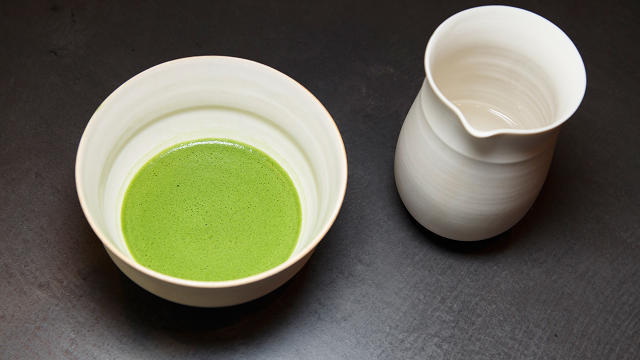
in fact, most americans are not regularly having tea at Eleven Madison Park. Day theorizes that tea’s re-surging reputation correlates with the upward push of foodie tradition, the place diners are acutely aware of where their meal comes from. “i need the friends to stroll away with having realized something, but additionally having tasted something delicious,” says Ruiz. “The latter is a very powerful, but expectantly they walk away with one thing cool that they didn’t comprehend sooner than… to change the best way they take into consideration now not best meals, however tea.”
Restaurant trend watchers, like Kathy YL Chan at Eater, say packages like these at Atera and Eleven Madison Park level to broader rising consumer themes and a rising “common curiosity and knowledge in tea.” “The timing is ideal for tea to have a turn in the highlight,” she writes.
At this point, 0.33-wave tea believers are a much smaller minority than espresso snobs, but which is because tea is still, in their estimation, playing seize-up. “a few years ago, I used to say that tea in america is the place wine used to be within the 1970s,” says Day. 4 a long time ago, customers exercised little discretion, and were satisfied sufficient sipping wine from cardboard boxes. ultimately, American taste shifted to Berringer and white Zinfandel, and later to greater-quality offerings. “Tea is every bit as advanced as wine,” says Day, who claims to have seen a “seismic shift” in the tea business in latest years, with restaurants caring extra about where they’re sourcing from. “And we’re slowly creeping into that territory now, where it’s like, wait a 2nd! there is extra to it.”
Most all tea people (naturally) appear to agree: one thing new is brewing. There are, then again, awesome dissenters, together with one man who claims to have considered it all ahead of.
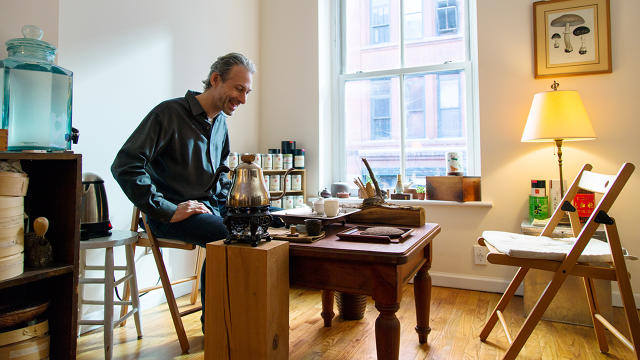
Tea, Interrupted
“Pioneer,” “iconic,” and “wonderful” had been one of the words utilized by fellow tea freaks to explain Sebastian Beckwith, the founder of In Pursuit of Tea, which provides tea to a few hundred the big apple cafes and restaurants, including Eleven Madison Park and Atera. (He also has a wholesome direct-to-shopper business.) “He looks like he simply stepped off a dusty path within the Himalayas,” stated Day, fondly describing the tea importer. on account that founding the company in 1999 following a stint as a travel guide in Nepal, India, and Bhutan, Beckwith has worked to deliver high quality tea from “foundation”—the blanket time period used to describe the place tea is grown—to American palettes.
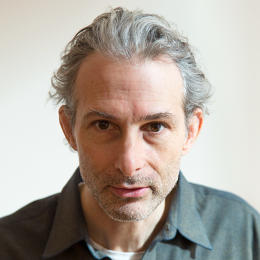
With slicked-back white hair, skinny jeans, and a black gingham Ralph Lauren button down, Beckwith appears extra like a model in between shoots than an adventure guide. earlier than traipsing around Asia, he labored as a location scout for Annie Leibovitz, and as an artwork handler, carrying Andy Warhol artwork thru manhattan’s busy streets. His occupation might be its own Dos Equis commercial.
but as of late, Beckwith is a optimal authority on tea, and is skeptical that the 1/3-wave tea pattern will take hold. “when you seem back on the historical past of tea, it’s most probably the one hundredth 1/3 wave of tea,” he says, meticulously preparing cups of high-grade ceylon and pu-erh, a black tea that’s usually aged between 10 to 15 years. “Tea goes in waves,” he added, noting that a few excessive-end tea stores, including a brick and mortar In Pursuit of Tea in Soho, spread out in big apple a few years in the past and have in view that all closed.
and then there may be the caffeine. in comparison with espresso, tea’s results are more subtle. there may be some scientific evidence that suggests an amino acid present in tea, L-theanine, has an immediate effect for your mental job without the crash of espresso. nevertheless it does not % the identical wallop. coffee is utilitarian. Tea is less so.
to say tea is not a thing at all within the U.S., on the other hand, could be a massive understatement. it can be a $10 billion business. espresso continues to be bigger, at $30 billion a year in the U.S., however tea is growing. american citizens drink 20% extra tea than they did within the year 2000, even if most of that’s via little white tea bags and at home. Starbucks, which is making a bet on the drink as part of its future, bought Teavana for over 1/2 one thousand million dollars in 2012, and has targeted a considerable amount of its effort on getting individuals to view tea more like a venti macchiato. “I previously shared our intent to reinvent the tea class, just as we did the espresso class, and we’re making significant progress against our plan to do so,” CEO Howard Schultz mentioned throughout a July earning’s name. In 2013, Starbucks opened its first ever tea bar in NY city, with areas now in los angeles and Chicago.
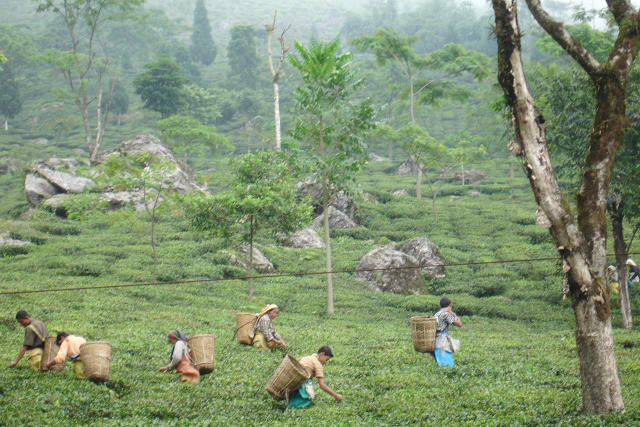
And yet, tea as a major foodie beverage has but to take off in this united states. In a 1999 articled titled “Tea with a Latte perspective,” the new york occasions described $10 cups of tea and intricate tea products and services loads like these at Atera at some of the city’s best restaurants. It did not rather work: “too much knowledge,” the article begins. Then there were these cafes Beckwith mentioned. those which might be nonetheless around shouldn’t have the cultish popularity of Blue Bottle.
Tea is sophisticated. Like coffee, different teas have completely different notes and taste profiles. in contrast to coffee, the coaching directions significantly differ among sure tea sorts, of which there are lots of. The water temperature and quality are “massively necessary,” per Beckwith. So is steeping time. A $four hundred per pound tea can taste like a bitter pot of liquid rubbish if steeped incorrectly. That scares a lot of people and restaurants away. Even Conrad, Samovar’s investor, admits that tea “is an awfully long and concerned course of.”
Beckwith thinks the aversion is cultural. possibly insurmountable. “some of the biggest problems is the Western feel of having to do it right,” he said. Beckwith has spent significant time touring and tea tasting. When individuals from one tea tradition try to fail to make a tea from every other a part of the sector, they throw the batch out and try once more. american citizens can’t handle that, he thinks. “If folks might simply be extra kick back,” he said, then perhaps tea could take off.
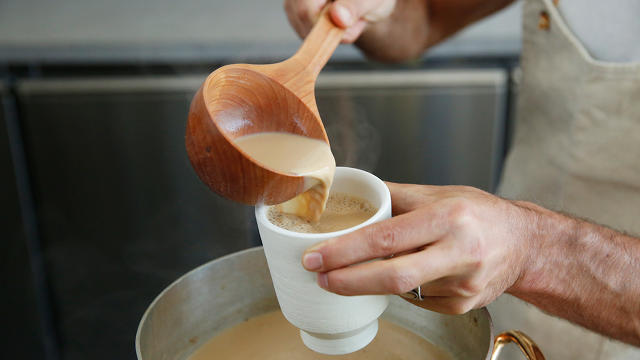
Streamlining The Tea process
Or maybe tea needs to be more sit back. “The challenge is getting individuals to understand, to interrupt them out of that mildew of tea is this very lengthy and involved course of,” mentioned Conrad. The borrowed aesthetics at Samovar are just step one in transferring drinkers away from a jolt of espresso to a soothing cup of oolong. When folks inevitably come into Samovar soliciting for lattes, a $four.25 cup of milky chai is recommended as a substitute, a transfer that converts 9 out of 10 buyers, Jacobs claims. impressed with the aid of the theater of pour over, Jacobs put in Alpha Dominche steampunk crucibles to exhibit the tea brewing course of. The small menu is also a nod to coffee culture, which primarily has 4 alternatives: espresso, drip, cappuccino, latte. Tea comes in tons of of sorts. but Samovar serves best eight: black, inexperienced, herbal, two types of chai, matcha, and two varieties of iced.
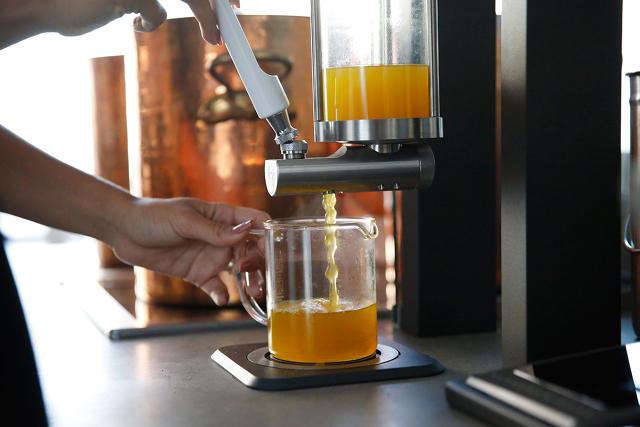
the brand new Samovar thus far most effective serves hundreds of consumers a day, but Jacobs sees himself at the beginning of an impending movement, similar to Blue Bottle when it first opened 10 years in the past. In Jacobs future, third-wave tea stores will speckle hip urban enclaves. “There will probably be different gamers evidently.”
And there are: outside of the Christopher boulevard 1 educate station in new york’s West Village is a brand new cafe referred to as Chalait, which focuses on matcha, tea, and espresso. the distance is small and minimal in a Tumblr-ready manner, with unblemished white partitions and a menu of hybrid drinks like inexperienced tea americanos and lattes, coronary heart shapes within the foam and all. It serves pour-over coffee, too, and each and every beverage is slightly pricey at about $four. Like Samovar and its $4.25 chai, the hope is to lure in clients with acquainted tastes, simple menus, and a espresso-pleasant vocabulary, and perhaps sooner or later convert them. In a race to become the Blue Bottle of tea, espresso still units the bar. coffee, like brushing your teeth, is ingrained as a morning ritual. It’s a caffeinated smack to jolt you out of your morning fog. espresso is a convenience. Tea is enjoyed.
For Samovar and other 0.33-wave tea shops, the challenge is to make the tea experience as much like the espresso expertise as it can be, with out dropping the essence of tea. “can you build tea into folks’s daily habit?” asks Jacobs. He thinks sure. “If it can be available, reasonably priced, scrumptious, fast—folks will buy into it.”
(190)

